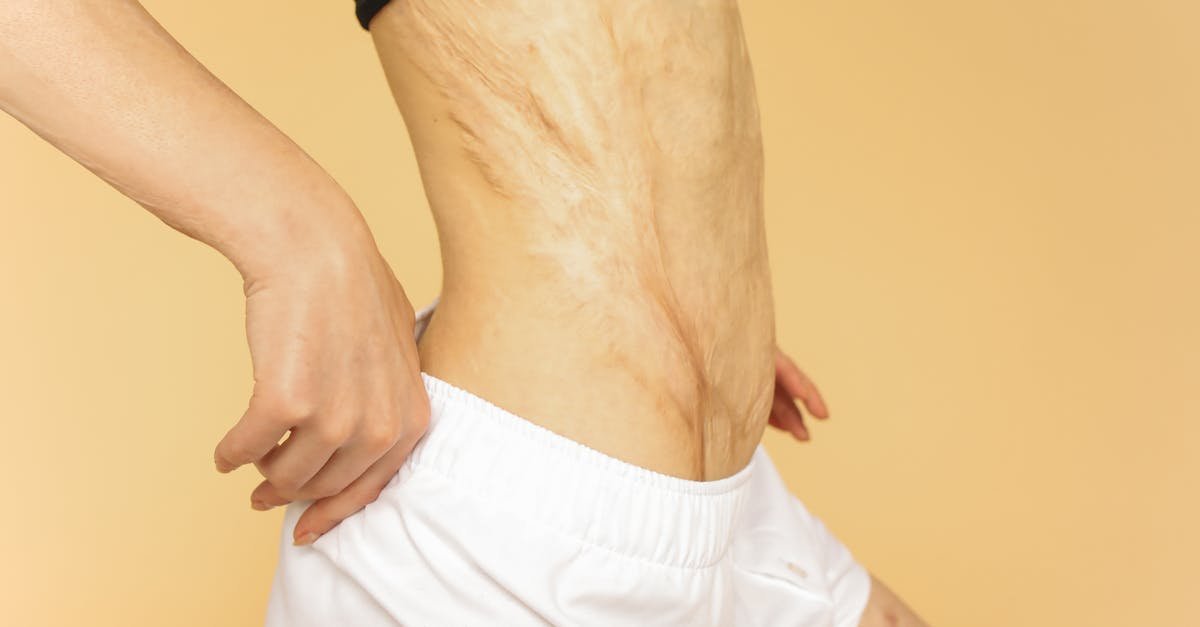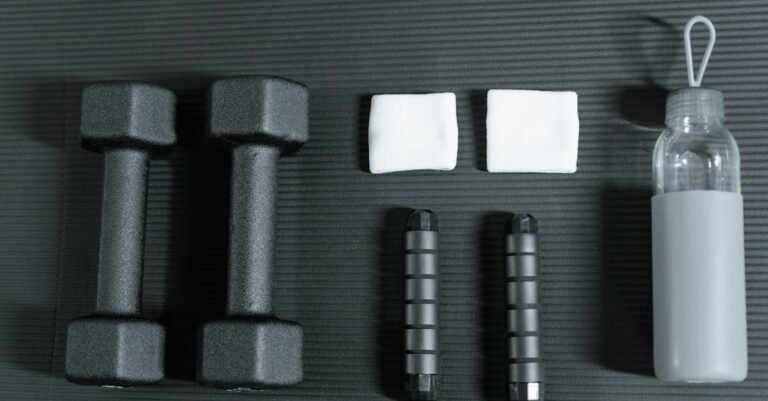Table of Contents
- Introduction: Why Fitness Myths Persist
- Myth #1: No Pain, No Gain
- Myth #2: Lifting Weights Makes Women Bulky
- Myth #3: You Can Spot Reduce Fat
- Myth #4: Cardio is the Only Way to Lose Weight
- Myth #5: You Need to Exercise for Hours Every Day
- Myth #6: Carbs Make You Fat
- Myth #7: Sweating More Means a Better Workout
- Myth #8: You Should Stretch Before Every Workout
- Myth #9: Diet Sodas Help with Weight Loss
- Myth #10: Muscle Turns Into Fat if You Stop Working Out (and Vice Versa)
- Conclusion: Embracing Evidence Based Fitness
- Frequently Asked Questions (FAQs)
Fitness Myths Debunked: Get The Real Facts
Introduction: Why Fitness Myths Persist
Let’s be real for a second. The fitness world can feel like the Wild West sometimes, can’t it? Everywhere you turn, there’s conflicting advice, “miracle” solutions, and gurus swearing by methods that sound too good (or too painful) to be true. It’s overwhelming! Where do these fitness myths even come from? Well, they often spring from outdated science, misinterpreted studies, gym locker room chatter passed down like ancient lore, or clever marketing designed to sell you something. Sometimes, it’s just wishful thinking – we *want* to believe there’s a shortcut or an easy way out. But relying on these myths can seriously derail your progress, lead to frustration, or even cause injury. It’s time to cut through the noise, bust these common misconceptions, and arm ourselves with the actual facts. Ready to get real about fitness?
Myth #1: No Pain, No Gain
Ah, the classic mantra echoing through gyms and workout videos for decades. “Feel the burn!” “Push through the pain!” While pushing your limits is part of improving fitness, the idea that exercise *must* hurt to be effective is not only wrong but potentially dangerous. This mentality often encourages people to ignore their body’s warning signals.
The Truth About Exercise Discomfort
There’s a huge difference between the discomfort of muscle fatigue (that satisfying feeling of muscles working hard) and actual pain. Muscle soreness after a challenging workout, known as Delayed Onset Muscle Soreness (DOMS), is normal, especially when you’re starting something new or increasing intensity. It typically peaks 24 to 72 hours post exercise. However, sharp, stabbing, or persistent pain during or after exercise is a red flag. It could signal an injury like a strain, sprain, or something more serious. Pushing through this kind of pain can turn a minor issue into a major setback.
Listening to Your Body: The Smart Approach
Think of your body like a sophisticated communication system. It sends signals – fatigue, mild soreness, sharp pain – to tell you what’s going on. Ignoring sharp pain is like ignoring the oil light in your car; you might get away with it for a bit, but eventually, you’ll break down. Effective training involves challenging yourself, yes, but also respecting your body’s limits. Learn to differentiate between the effort of a good workout and genuine pain. If something hurts badly, stop, assess, and rest or seek professional advice if needed. Sustainable fitness is about working *with* your body, not against it.
Myth #2: Lifting Weights Makes Women Bulky
This is probably one of the most persistent myths keeping women away from the weight room! The fear of suddenly waking up looking like a professional bodybuilder after lifting a few dumbbells is incredibly common, but scientifically unfounded for the vast majority of women.
Understanding Muscle Growth (Hypertrophy)
Building significant muscle mass (hypertrophy) is hard work! It requires a specific combination of factors: intense, progressive strength training, a significant calorie surplus (eating more calories than you burn), and, crucially, high levels of testosterone. While women do produce testosterone, it’s generally in much smaller amounts compared to men. This hormonal difference makes it biologically very difficult for most women to pack on large amounts of muscle mass without extremely dedicated, specialized training programs and nutrition plans, often spanning years.
Benefits of Strength Training for Women
Instead of making you “bulky,” strength training offers women a ton of amazing benefits! It helps build lean muscle, which boosts metabolism (meaning you burn more calories even at rest). It increases bone density, reducing the risk of osteoporosis later in life. It improves strength and functionality for everyday tasks, enhances body composition (leading to a more toned appearance), boosts confidence, and improves overall health markers. So, pick up those weights! You’ll likely get stronger, leaner, and healthier, not “bulky.”
Myth #3: You Can Spot Reduce Fat
Wouldn’t it be nice if we could just do a million crunches and magically melt away belly fat? Or endless leg lifts to banish thigh fat? Unfortunately, our bodies just don’t work that way. The idea of “spot reduction,” or losing fat from one specific area by exercising that area, is a total myth.
How Fat Loss Actually Works
Fat loss happens systemically, meaning across your entire body. When you consume fewer calories than you expend (creating a calorie deficit), your body starts using stored fat for energy. But here’s the kicker: you can’t choose *where* your body pulls that fat from first. Genetics, hormones, and overall body composition play a big role in determining your fat distribution patterns and where you tend to lose fat first (and last!). For many, the abdomen, hips, and thighs are common areas where fat storage is prioritized and often the last places to lean out.
Why Crunches Alone Won’t Give You Abs
Doing exercises like crunches or sit ups strengthens the abdominal muscles underneath the fat, but it does very little to burn the layer of fat covering them. You could have the strongest abs in the world, but if they’re hidden under a layer of subcutaneous fat, you won’t see that coveted six pack. Achieving visible abs requires a combination of overall fat loss (primarily through diet and consistent exercise that burns calories) and exercises that strengthen the core muscles. Focus on a balanced approach: a healthy diet creating a calorie deficit, regular cardiovascular exercise, and full body strength training, including core work.
Myth #4: Cardio is the Only Way to Lose Weight
Walk into any gym, and you’ll likely see rows of treadmills, ellipticals, and bikes occupied by people diligently trying to shed pounds. Cardio is definitely important for heart health and burns calories, but believing it’s the *only* or even the *best* way to lose weight is a common misconception.
The Role of Strength Training in Weight Loss
While cardio burns calories during the activity itself, strength training plays a crucial, often underestimated, role in long term weight management. Building muscle through resistance training increases your resting metabolic rate (RMR). Muscle tissue is metabolically active, meaning it burns calories even when you’re not exercising. The more lean muscle mass you have, the more calories your body burns throughout the day, making it easier to maintain a healthy weight or continue losing fat. Strength training also helps reshape your body, leading to a leaner appearance even if the number on the scale doesn’t drop dramatically at first.
Finding Your Ideal Exercise Mix
So, what’s the magic formula? The most effective approach for weight loss and overall fitness typically involves a combination of both cardiovascular exercise and strength training. Cardio helps create that immediate calorie deficit and improves cardiovascular health, while strength training builds metabolism boosting muscle and improves body composition. Finding a routine you enjoy and can stick with is key. This might mean 3 days of strength training and 2 days of cardio, or perhaps circuit training that combines elements of both. Listen to your body and find a sustainable mix that works for your goals and lifestyle.
Myth #5: You Need to Exercise for Hours Every Day
The image of elite athletes spending countless hours training can be intimidating. It often leads people to believe that unless they can commit to lengthy, daily gym sessions, there’s no point in starting. Good news: this isn’t true! You don’t need to live in the gym to achieve significant health and fitness benefits.
Quality Over Quantity: Effective Workouts
Consistency and intensity often trump duration. A focused, high quality 30 minute workout can be far more effective than a meandering, unfocused hour long session. Think about High Intensity Interval Training (HIIT), circuit training, or a well structured strength session where you push yourself during work periods and take appropriate rest. The key is to make the time you *do* have count. General health guidelines often recommend around 150 minutes of moderate intensity aerobic activity or 75 minutes of vigorous intensity activity per week, plus muscle strengthening activities twice a week. This breaks down to manageable chunks throughout the week.
Finding Time for Fitness in a Busy Schedule
Life is busy, we get it! But fitting in exercise doesn’t have to mean hours logged daily. Look for opportunities: take the stairs, walk during your lunch break, do bodyweight exercises while watching TV, or try shorter, more intense workouts. Even 10 to 15 minute bursts of activity throughout the day add up. The “best” workout routine is the one you can consistently stick to. Don’t let the “all or nothing” mentality prevent you from doing *something*.
Myth #6: Carbs Make You Fat
Carbohydrates have become the villain in many popular diet trends. We hear it all the time: cut carbs to lose weight! While it’s true that overconsuming refined carbohydrates and sugary foods can contribute to weight gain, demonizing all carbs is a huge mistake. They are your body’s primary and preferred source of energy.
The Importance of Carbohydrates for Energy
Think of carbs as the fuel for your body’s engine, especially your brain and muscles. When you eat carbs, your body breaks them down into glucose, which is used for immediate energy or stored as glycogen in your muscles and liver for later use. This energy is crucial for powering your workouts, maintaining focus throughout the day, and supporting overall bodily functions. Cutting carbs too drastically can lead to fatigue, brain fog, decreased athletic performance, and nutrient deficiencies, as many healthy carb sources are packed with fiber, vitamins, and minerals.
Choosing the Right Carbs
The key isn’t eliminating carbs, but choosing the *right* kinds and consuming them in appropriate amounts. Focus on complex carbohydrates like whole grains (oats, brown rice, quinoa), fruits, vegetables, and legumes. These foods are nutrient dense, high in fiber (which aids digestion and promotes fullness), and provide sustained energy release. Limit simple, refined carbs found in sugary drinks, white bread, pastries, and processed snacks, as these can cause rapid blood sugar spikes and contribute to excess calorie intake without providing much nutritional value. It’s about quality, not just quantity.
Myth #7: Sweating More Means a Better Workout
We often equate dripping sweat with effort and calorie burn. Finishing a workout drenched can feel incredibly satisfying, making us think we’ve accomplished more. But is the amount you sweat really a reliable indicator of workout quality or fat loss?
What Sweat Really Indicates
Sweating is simply your body’s natural air conditioning system. Its primary function is thermoregulation – cooling your body down when its internal temperature rises. How much you sweat depends on various factors, including genetics, ambient temperature and humidity, hydration level, fitness level (fitter people often sweat sooner and more efficiently), and even what you’re wearing. You can sweat buckets sitting in a sauna or doing gentle yoga in a hot room, burning relatively few calories. Conversely, you might barely break a sweat swimming in a cool pool or lifting heavy weights in an air conditioned gym, yet still get an intense, effective workout.
Staying Hydrated is Key
While sweat isn’t the best measure of workout intensity, losing fluids through sweat means hydration is crucial. Dehydration can significantly impair performance, cause fatigue, muscle cramps, and dizziness. Focus on drinking water before, during, and after your workouts, regardless of how much you perceive yourself to be sweating. Pay attention to workout intensity, duration, and how you feel rather than using sweat volume as your primary gauge of success.
Myth #8: You Should Stretch Before Every Workout
Remember those PE classes where you held static stretches (like touching your toes) before starting any activity? For years, static stretching before exercise was considered essential for injury prevention. However, modern research suggests this might not be the best approach, and could even slightly hinder performance.
Dynamic vs. Static Stretching
There are two main types of stretching. Static stretching involves holding a stretch position for a period (typically 15 60 seconds). Dynamic stretching involves moving your muscles and joints through their full range of motion in a controlled way (think arm circles, leg swings, torso twists). Research now indicates that performing static stretches on cold muscles before a workout might temporarily decrease muscle strength and power output. It doesn’t seem to significantly reduce the risk of acute injury either.
When is the Best Time to Stretch?
The ideal pre workout routine focuses on a warm up that includes light cardio (like jogging or jumping jacks) followed by dynamic stretching. Dynamic stretches increase blood flow, raise muscle temperature, and activate the nervous system, preparing your body for the specific movements of your workout. Save the static stretching for *after* your workout when your muscles are warm and more pliable. Post workout static stretching can help improve flexibility and range of motion over time and may aid in cool down.
Myth #9: Diet Sodas Help with Weight Loss
Switching from sugary sodas to their “diet” or “zero sugar” counterparts seems like a smart move for weight loss, right? They offer sweetness without the calories. However, the relationship between artificial sweeteners, appetite, and overall health is complex, and diet sodas might not be the helpful weight loss tool they appear to be.
The Problem with Artificial Sweeteners
While technically calorie free, some research suggests artificial sweeteners might trick your brain and metabolism. The intense sweetness without the accompanying calories might disrupt appetite regulation signals, potentially leading to increased cravings for sugary or high calorie foods later on. Some studies have linked regular consumption of artificially sweetened beverages to changes in gut microbiota, glucose intolerance, and even a slightly increased risk of metabolic syndrome, though more research is needed. Plus, relying on diet soda doesn’t help break the psychological dependence on super sweet tastes.
Healthier Hydration Options
The best beverage choice for hydration and health is plain water. If you find water boring, try infusing it with fruit slices (lemon, lime, berries) or cucumber and mint. Unsweetened tea (green, black, herbal) and black coffee (in moderation) are other good options. Sparkling water can also satisfy the craving for carbonation without the sweeteners or calories. Focusing on these healthier alternatives is generally a better long term strategy for weight management and overall well being than relying on diet sodas.
Myth #10: Muscle Turns Into Fat if You Stop Working Out (and Vice Versa)
This is a strange one, but surprisingly common! People worry that if they build muscle and then stop exercising, all that hard earned muscle will magically transform into fat. Similarly, some hope that exercising will somehow convert their body fat directly into muscle.
Understanding Different Body Tissues
Muscle and fat are two completely distinct types of tissue, like oil and water. Muscle tissue is made up of protein fibers responsible for movement and metabolic activity. Fat tissue (adipose tissue) is primarily composed of lipids (fat cells) used for energy storage, insulation, and hormone regulation. They have different structures, functions, and metabolic processes. One cannot biologically convert into the other.
What Really Happens When You Stop Training
If you stop strength training, your muscles will gradually shrink due to lack of stimulus – a process called atrophy. They don’t turn into fat. However, if you stop exercising but continue to consume the same number of calories (or more), you may gain fat because you’re burning fewer calories overall, and your metabolism might slightly decrease due to muscle loss. This combination of muscle atrophy and potential fat gain can create the *appearance* that muscle has turned into fat, but they remain separate tissues changing in size and proportion. Conversely, exercise (especially strength training) helps build muscle, and a proper diet helps reduce fat stores, but they don’t transform into each other.
Conclusion: Embracing Evidence Based Fitness
Navigating the world of fitness doesn’t have to be confusing! By understanding the science and debunking these common myths, you can approach your health journey with more confidence and effectiveness. Remember, there are rarely quick fixes or magic bullets. Sustainable results come from consistency, listening to your body, combining sensible nutrition with a balanced exercise routine you enjoy, and focusing on evidence based principles rather than catchy slogans or outdated advice. Forget “no pain, no gain” and embrace smart, informed training. Don’t fear the weights, understand how fat loss really works, and fuel your body appropriately. You’ve got this! Now go forth armed with facts and build a healthier, stronger you.
Frequently Asked Questions (FAQs)
FAQ 1: How long does it take to see fitness results?
This really varies from person to person! Factors like your starting fitness level, consistency, workout intensity, diet, genetics, and sleep all play a role. You might *feel* better (more energy, sleeping better) within a week or two. Noticeable changes in strength often occur within 4 to 8 weeks. Visible changes in body composition (muscle definition, fat loss) typically take longer, often becoming more apparent after 8 to 12 weeks of consistent effort. Patience and consistency are key!
FAQ 2: Is it okay to exercise every day?
It depends on the type and intensity of the exercise. High intensity workouts like heavy lifting or intense cardio usually require rest days (1 3 per week) to allow muscles to recover and rebuild, preventing overtraining and injury. However, lower intensity activities like walking, gentle stretching, or light yoga can often be done daily and are beneficial for overall health and active recovery. Listen to your body – if you feel constantly fatigued or sore, you likely need more rest.
FAQ 3: What’s more important for weight loss: diet or exercise?
Experts generally agree that diet plays a larger role in weight loss, often cited as an 80/20 split (80% diet, 20% exercise). It’s much easier to create a significant calorie deficit by adjusting food intake than by trying to burn massive amounts of calories through exercise alone. However, exercise is crucial for maintaining weight loss, building muscle (which boosts metabolism), improving body composition, and for numerous other health benefits beyond weight. For sustainable, healthy results, both diet and exercise are essential and work best together.
FAQ 4: Can I build muscle on a vegetarian or vegan diet?
Absolutely! While meat is a common source of protein, there are plenty of excellent plant based protein sources available. Vegetarians can rely on eggs, dairy, legumes (beans, lentils, peas), tofu, tempeh, edamame, nuts, and seeds. Vegans can focus on legumes, tofu, tempeh, seitan, nutritional yeast, quinoa, nuts, seeds, and plant based protein powders. The key is ensuring you consume enough total protein throughout the day and include sources rich in essential amino acids, particularly leucine, which is vital for muscle protein synthesis. Careful planning makes muscle building entirely possible on a plant based diet.
FAQ 5: Do I need supplements to get fit?
For the vast majority of people, supplements are not necessary to get fit or achieve health goals. A well balanced diet should provide all the nutrients you need. Supplements cannot replace a poor diet or inconsistent training. Focus first on whole foods – lean proteins, complex carbohydrates, healthy fats, fruits, and vegetables. Some supplements, like protein powder, can be convenient for increasing protein intake, especially post workout or for those struggling to meet their needs through food alone. Creatine is another well researched supplement that can aid performance and muscle growth. However, always prioritize nutrition from whole foods and consult with a healthcare professional or registered dietitian before starting any supplement regimen.










